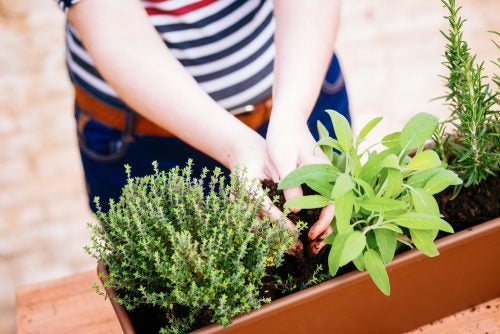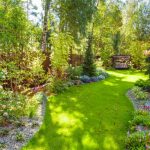Having a mini garden helps us to leave stress behind and enjoy moments of peace and tranquility. In addition, it is a good way to purify the air in your home. A mini garden is an exercise in creativity, organization and relaxation. It is a small piece of nature within the home that should be used in our decoration.

Despite the simplicity that it’s structuring implies, by giving us a moment to focus our attention solely and exclusively on designing and placing each of its elements, we obtain great benefits on a psycho-emotional level. In short: it is a very simple activity, but effective when it comes to providing well-being.
It is proven that gardening, in addition to bringing beauty to our surroundings, contributes to our mental well-being. And worth mentioning one benefit more important: as plants help to purify the air of the home, causing the air to flow cleaner and more beneficial to our health.
Small beginnings.
In general, those who dare to have a mini garden at home tend to do so for one or more of the following reasons:
- They would like to have a garden, but they do not have enough space or a home with an outdoor space.
- They are curious about the elaboration of bonsai and the like.
- They don’t know how to care for plants, but they want to try.
- They are curious about the plant kingdom.
- They need to relax.
First step.
When creating a mini garden it is necessary to take into account the time that you want to dedicate to it, since not all plants can be cared for in the same way; some need care often and others, the less care they receive the better.
Once we are clear about the above, we can move on to the funniest part: choosing the plants that we like the most. Next, we must consider the place where we are going to place them and whether or not we want to leave them in the container where we have bought them.
In case we want to change the container for a more aesthetic one, it will be necessary to pay attention to the needs of the plant. For example, there are species that need to have good ventilation and therefore holes are made in the pot. Others may need more light and therefore a transparent container should be chosen, and so on.
Obviously, the type of mini-garden will be determined by the species we have chosen. Now, the most appropriate plant species for a first mini garden are those that do not need too much light, irrigation and that tolerate high temperatures; like succulents and cacti.
Creation of the mini garden.
To create a mini garden it is necessary to have the following materials:
- Soil or mulch.
- Gravel or small stones.
- Vegetable or activated charcoal.
- Moss, sand and decorative stones (optional).
First, we will fill the pot with about 2 to 3 cm of gravel. This will prevent standing water from coming into contact with the roots. We can add a layer of moss on the bottom to serve as a sponge and prevent the soil from seeping into the gravel.
Next, we will mix the soil or compost with charcoal: this organic material will facilitate drainage and help the roots to grow properly. We will place a layer with this mixture, which will occupy a quarter or third of the capacity of the pot.
Now we will take the plants and place them inside the pot. We will make holes in the substrate to introduce the roots well there. We must leave space of about 10 cm minimum between plant and plant.
Decoration and maintenance.
Once the plants are located, we will cover the surface with moss or, if we prefer, with decorative stones; these will help prevent weed growth. Next, we will water the mini-garden with a little water, until we see that the gravel at the bottom is moistened.
By the way, you have to try to water the plants early in the morning and at night. Finally, we will place the mini-garden in a well-lit area, where the sun’s rays shine indirectly.
Mini garden or orchard?
If we want our mini-garden to have a double function, we can create it as if it were a small garden, with plants such as coriander, parsley and mint, for example.
We can also combine decorative plants with medicinal or aromatic herbs. And if we wish, we can add accessories such as figures, houses, bridges and other miniature structures. You just have to let your imagination fly! Today we can have a mini-garden and tomorrow, perhaps, a hanging garden.


